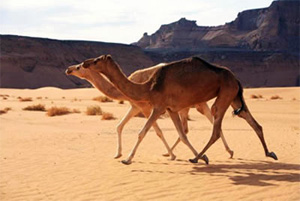 What is Hyperthermic Training?
What is Hyperthermic Training?
We are all well aware of the negative effects that heat can have on race performance. Body temperature is one of many important factors affecting our performance but it is a big one. Even in a moderate climate like the Coast, racing temperatures can reach extremes. The best athletes are those whose bodies 1) are the most efficient at dissipating heat and 2) can maintain a higher core temperatures than others and therefore a higher energy output. Luckily for us, we can train our bodies to acclimatize to heat.
It is important as a summer or winter athlete to train not only to run, but also train to run in the heat. Just as we use running and other forms of exercise as a training stress, hyperthermic training uses heat as a training stress. The goals of hyperthermic training are twofold: the first is to increase exercise capacity in the heat (heat acclimatization). The second is to actually increase overall exercise capacity. As you will see below, hyperthermic training can be useful to all athletes, not just those competing in the heat.
Benefits of Heat Training
I put a little symbol next to each of the potential benefits of hyperthermic training to tell if it is beneficial for heat acclimatization (#) or overall endurance performance ($).
- Plasma volume is increased. With more fluid in circulation, the heart can pump less hard to maintain the same cardiac output. This results in a reduced heart rate at any given workload, in other words, a reduced relative intensity. An added benefit of an increase in plasma volume is that the body senses a decrease in red blood cell concentration, this results in an EPO response (much like training at altitude) that increases your total red blood cell volume (and therefore oxygen carrying capacity). Increased plasma volume also allows faster dissipation of core heat. #$
- Muscle/tissue blood flow is increased. Blood not only brings oxygen and fuel to muscle cells, it also clears away metabolic substrates. Increasing flow allows better fuel (so much so that one study showed a 40-50% decreased dependence on muscle glycogen during exercise) and oxygen delivery as well as increasing substrate clearance. #$
- Thermoregulatory control is improved. By increasing our heat dissipation capacity, primarily by lowering the threshold core temperature for the onset of sweating, hyperthermic training allows our body to run at a cooler temperature at any given intensity (or increased intensity at the same temperature). #$
- Muscle hypertrophy. Hyperthermic training has been shown to dramatically increase the release of Heat Shock Protein and Growth Hormones. These releases are big (a two-fold to sixteen-fold increase!) and both are very important in muscle recovery and regeneration. #
- Oxidative stress is reduced. Aerobic exercise increases production of reactive oxygen species and a sauna bath changes the antioxidant response to exercise. #

Recommendations for Heat Training
Researchers have identified a variety of successful methods for hyperthermic training. The majority utilize a dry sauna capable of 80-100 degree celsius temperatures. Because heat reduces exercise capacity, the current belief is that hyperthermic training for improvement in performance should be completed post-exercsie. Several studies have used a 30 minute sauna, 2x per week for three weeks before an important competition as their protocol. Other studies use longer or more frequent exposures. Exposures above 1 hour/day and more frequent than 3 days/week become very time consuming (likely better spent actually running) and may increase risk of complications.
Like any other training modality, hyperthermic training should be factored in while determining the overall training load. Complications may occur and as with any training program, your doctor should be consulted if you have any risk factors that contra-indicate sauna use.
References:
- Scoon et al., (2007) Effect of post-exercise sauna bathing on the endurance performance of competitive male runners. Journal of Science and Medicine in Sport.
- Costa et al., (2014) Heat acclimation responses of an ultra-endurance running group preparing for hot desert-based competition. European Journal of Sport Science.
- Garrett et al., (2012) Effectiveness of short-term heat acclimation for highly trained athletes. European Journal of Applied Physiology.
- Sawka et al., Thermoregulatory responses to acute exercise-heat stress and heat acclimation. Handbook of Physiology.
- Sutkowy et al., (2014) The effect of a single Finnish sauna bath after aerobic exercise on the oxidative status in healthy men. Scandinavian Journal of Clinical & Laboratory Investigation.

